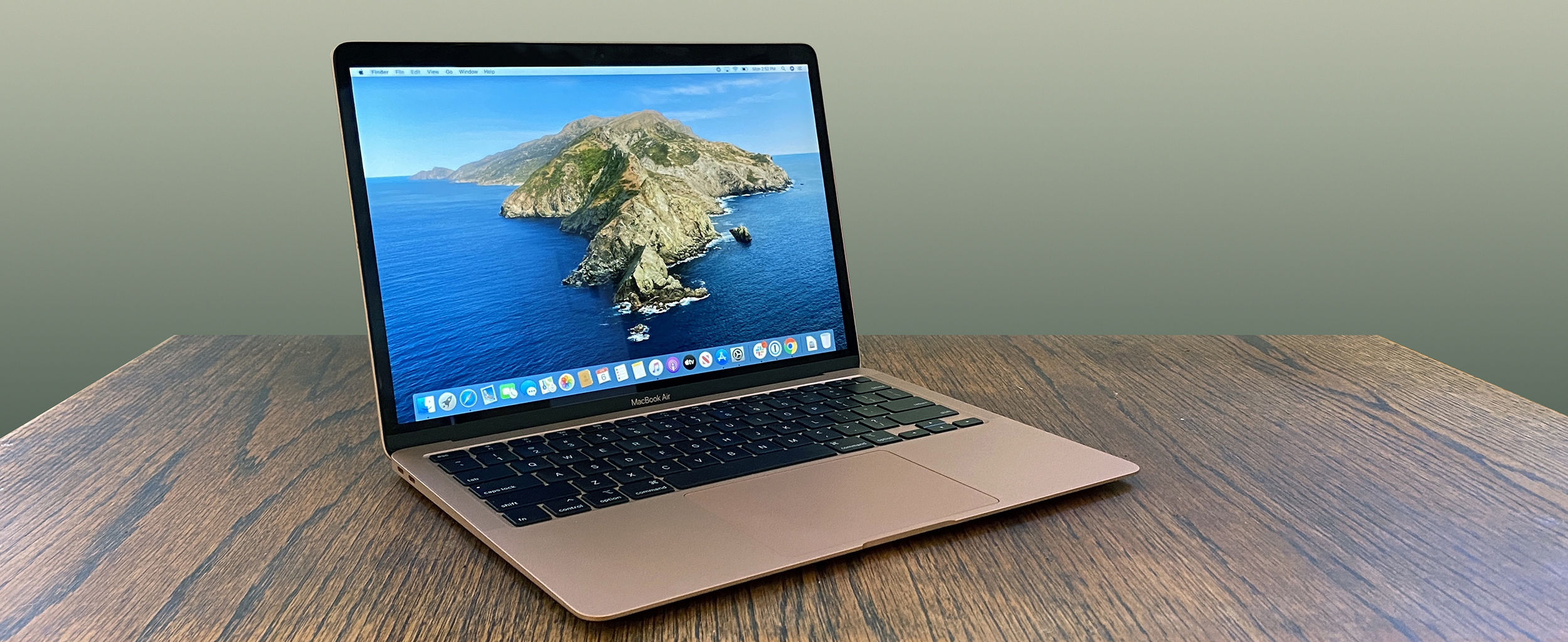Tom's Guide Verdict
The MacBook Air 2020 is the best MacBook for most people, thanks to a major keyboard upgrade, impressive sound and a great display.
Pros
- +
Comfortable keyboard
- +
Elegant design
- +
Long battery life
- +
Powerful speakers
- +
Twice as much storage by default
Cons
- -
Performance trails Windows laptops
- -
Low-res webcam
- -
No USB-A ports
Why you can trust Tom's Guide
Editor's note: Apple replaced this laptop in its lineup with the MacBook Air with M1 processor — which is one of the best laptops. Here is the original review we published for the Intel-based MacBook Air.
The MacBook Air 2020 is here, and I’ve haven’t been this excited for a keyboard in my life. That’s how important this year’s Air is: it’s one of the biggest updates yet to Apple’s popular wedge-shaped ultraportable. While the 2018 Retina Display update was an important step forward for the MacBook Air, it came with a problem: a butterfly-switch keyboard that was shallow and unreliable.
The new MacBook Air fixes that problem with a new Magic Keyboard with better travel and a more proven scissor-switch mechanism. The new Air also boasts improved battery life, enough to last you a whole day of work.
- MacBook Air vs MacBook Pro: What's the best MacBook?
- The best laptop deals
- Everything to know about the MacBook Air 2021
On top of that, you've got all the standard aspects of Apple's excellent MacBook line: strong sound, slick design and a sharp, colorful display. Apple's even made some pricing and configuration changes that make the new Air a more affordable and value-driven laptop.
On the downside, the new 10th generation Intel processor isn't as fast as we'd like at this price, and Apple is still going USB-C only (despite the fact that plenty of USB-A accessories still exist).
Price: $999 (starting) $1,299 (as tested)
CPU: 10th Gen Intel Core i3, Core i5, Core i7
GPU: Intel Iris Plus
RAM: 8GB, 16GB
Storage: 256GB, 512GB, 1TB, 2TB
Display: 13.3-inch, 2560 x 1600
Battery: 9:31 (tested)
Size: 11.9 x 8.4 x 0.6 inches
Weight: 2.8 pounds
MacBook Air 2020 review: Price and configurations
As noted above, the Intel-based MacBook Air is no longer available for sale. It came out in March 2020.
For a while, the MacBook Air started at $1,099, meaning that Apple didn't sell a sub-$1,000 laptop. The new MacBook Air fixes that, knocking down the intro level price to $999, for a configuration that includes an Intel 10th Gen Core i3 CPU, 8GB of memory and 256GB of storage. Not only is that model cheaper than it was last year, but it's also got an SSD that's twice as large as the 128GB drive that Apple used to default to.
We tested a slightly upgraded model, with an 10th Gen Core i5 CPU, 8GB of memory and 512GB of storage, which costs $1,299. A $150 upgrade to a Core i7 CPU would bring the price to $1,549, while doubling the memory to 16GB costs $200. I'd probably opt for a $1,499 model with an i5 CPU and the extra RAM.
The Dell XPS 13 (2020) starts at $1,249, with a Core i3-1005G1 chip, 8GB of RAM and 256GB of storage, while the Microsoft Surface Pro 7 with Signature Type Cover starts at $908, with the same Core i3-1005G1 CPU, but 4GB of RAM and a 128GB SSD. You can buy a Core i5/8GB/256GB Surface Pro 7 for $1,199, but then the $159 Type Cover brings that up to $1,358.
MacBook Air 2020 review: Design
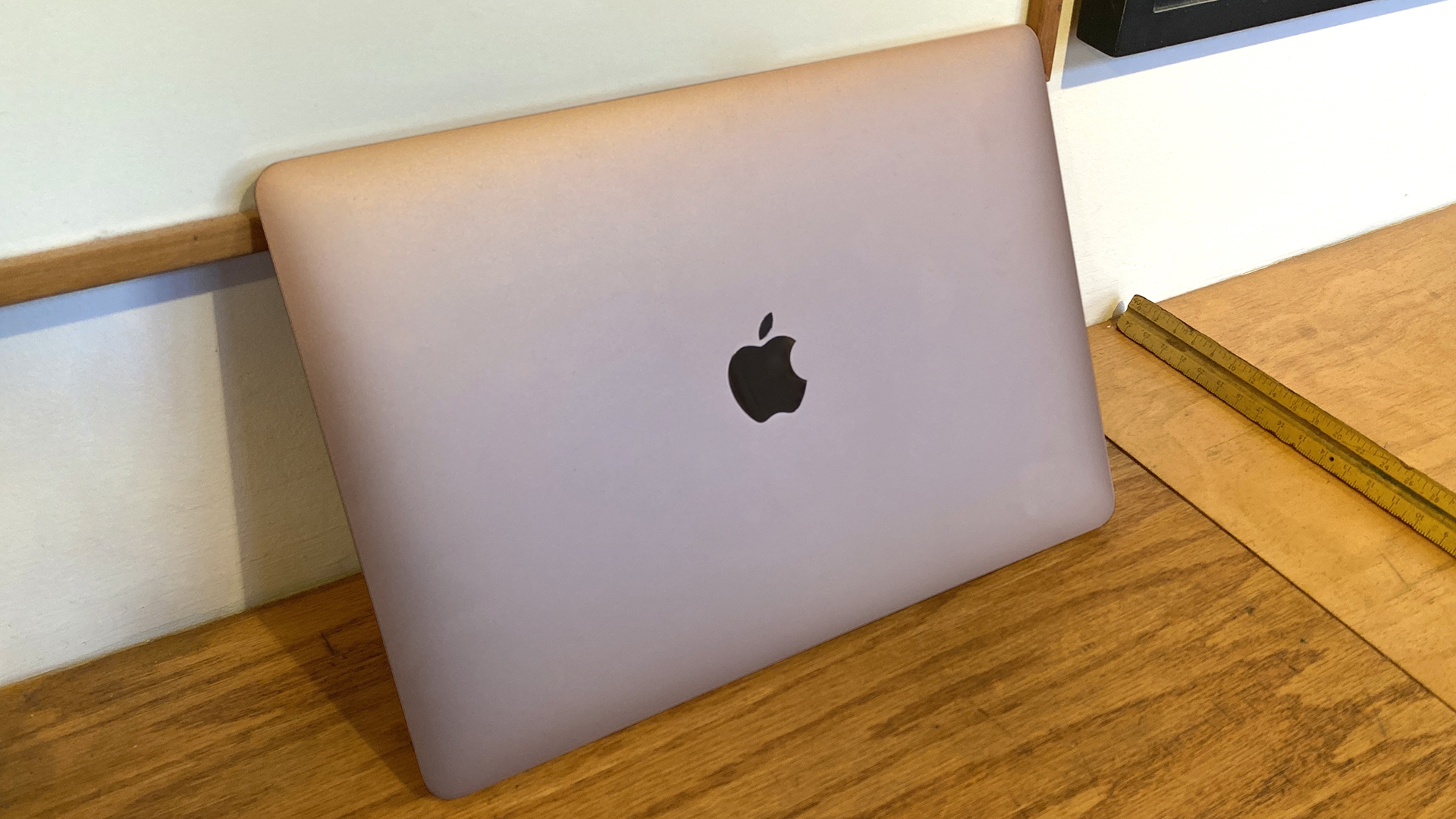
While Dell and HP are catching up to Apple on aesthetics, the MacBook Air 2020 is still a gorgeous laptop that stands out in a crowd. The Gold color version still looks fresh, even though Apple's only made minor tweaks to the design over the years. It's a matter of contrast, as the Gold keyboard deck and chassis just pair better with the black bezel and keyboard than the Silver and Space Gray.
The Air's display bezels look thin enough on the sides, but the top bezel (which is wide enough to allow for a web-cam) looks a little chunky. Maybe someday we'll see a MacBook with a notched display and Face ID.
As I tested the 13-inch MacBook Air, I found myself wishing Apple made it in a larger 15-inch design. This was more about my forearms feeling a little scrunched than anything else (I'm used to working on larger laptops), though more screen space would be welcome.
The new MacBook weighs 2.8 pounds and measures 11.9 x 8.4 x 0.6 inches. That’s the same as last year's model, showing that the right keyboard doesn't have to change anything about the chassis. The XPS 13 (2.8 pounds, 0.6 inches) measures similarly, while the Surface Pro 7 (1.7 pounds, 2.4 pounds with case, 0.3 inches) is both thinner and lighter.
MacBook Air 2020 review: Ports
The new MacBook Air has dual Thunderbolt 3 ports on the left and its headphone jack on the right. I would rather Apple split USB-C ports between the left and right sides of the laptop, but it's not a dealbreaker.
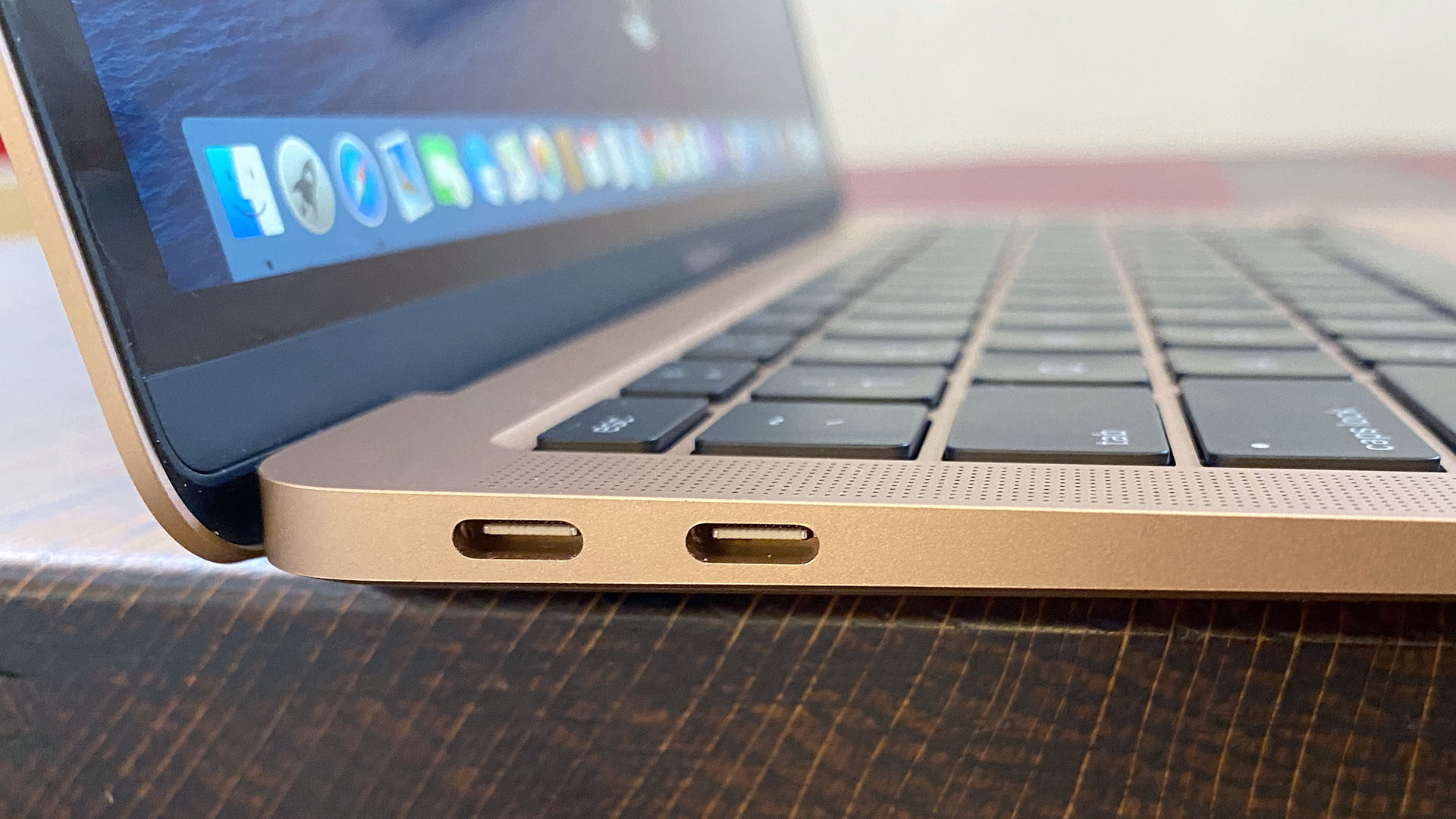
When Apple saw the light on replacing the Butterfly keyboard, I was hoping it would also reconsider bringing back the boxy USB-A ports for easier use with most peripherals. Alas, you'll need an hub or adapter if you want to use any of your slightly older gadgets and cables.
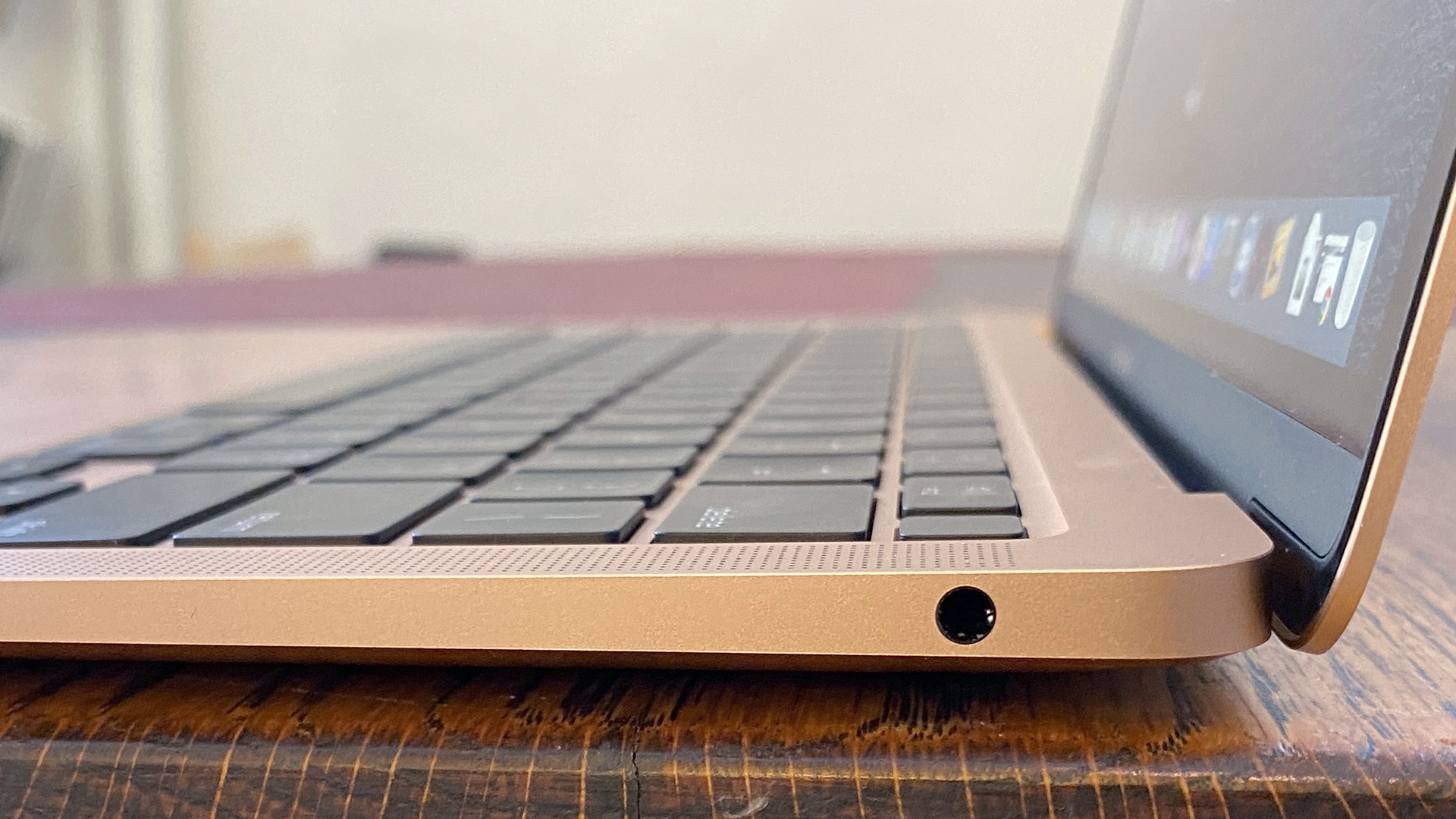
The Surface Pro 7 offers a USB-A port, while the XPS 13 doesn't (Dell throws in a USB-C to USB-A adapter). Both the Surface Pro and XPS 13 include a microSD card reader.
MacBook Air 2020 review: Display
Watching the climactic scene of the film Hereditary on the MacBook Air 2020, I saw precise blues, yellows and magentas in the flowers that comprise Florence Pugh's dress. I also noticed lots of small detail, such as the stamens of the blooms and the slight bruises and wear and tear on her face. When the camera panned back to the barn, the giant fire rendered in an accurate golden blaze.

The light in my apartment must be pretty cold, as the True Tone display option (which adjusts white balance for ambient lighting) warmed the color balance on the Air. As I watched Hereditary, and episodes of chef J. Kenji López-Alt's cooking series on YouTube, I found that the display looked better with True Tone on.
Our colorimeter rates the MacBook Air's Retina Display as producing 113% of the sRGB gamut, which clears the 100% standard for premium laptops. The XPS 13 (108%) and the Surface (97%) had lower scores.
The Air's screen is also plenty bright, producing 386 nits of brightness, which is a small notch below the 395-nit Surface Pro 7. The 4K version of the XPS 13 rates for 301 nits, while the 1080p XPS 13 outshines the MacBook Air with 417 nits.
MacBook Air 2020 review: Audio and webcam
Never have I heard this much volume come out of such a small laptop. As I typed this review, I felt immersed in The Weeknd's "Blinding Lights," with its strong, pulsing bass, silky sweet vocals and crisp synths. I also heard strong details of the Arctic Monkeys song "Do I Wanna Know?" as if its guitars were growling at me.
Right now, as the best webcams are sold out everywhere, and we're all learning how to use Zoom, I really wish Apple could buck the trend of laptops having the bare minimum when it comes to internal cameras. Instead, the MacBook Air 2020 has the same lackluster 720p webcam as before, which doesn’t provide a great image of yourself for all the video calls you'll be making and or quarantine vlogs you decide to capture.
MacBook Air 2020 review: Keyboard and touchpad
The biggest reason why I'm considering buying the MacBook Air 2020 for myself is the magic of a great keyboard. Specifically, the Magic Keyboard that Apple finally bestowed upon the MacBook Air (after giving it to the MacBook Pro 16-inch last year), which has keys that actually feel great to type on, as if my fingers are a pack of Marios gleefully bouncing off of goombas.
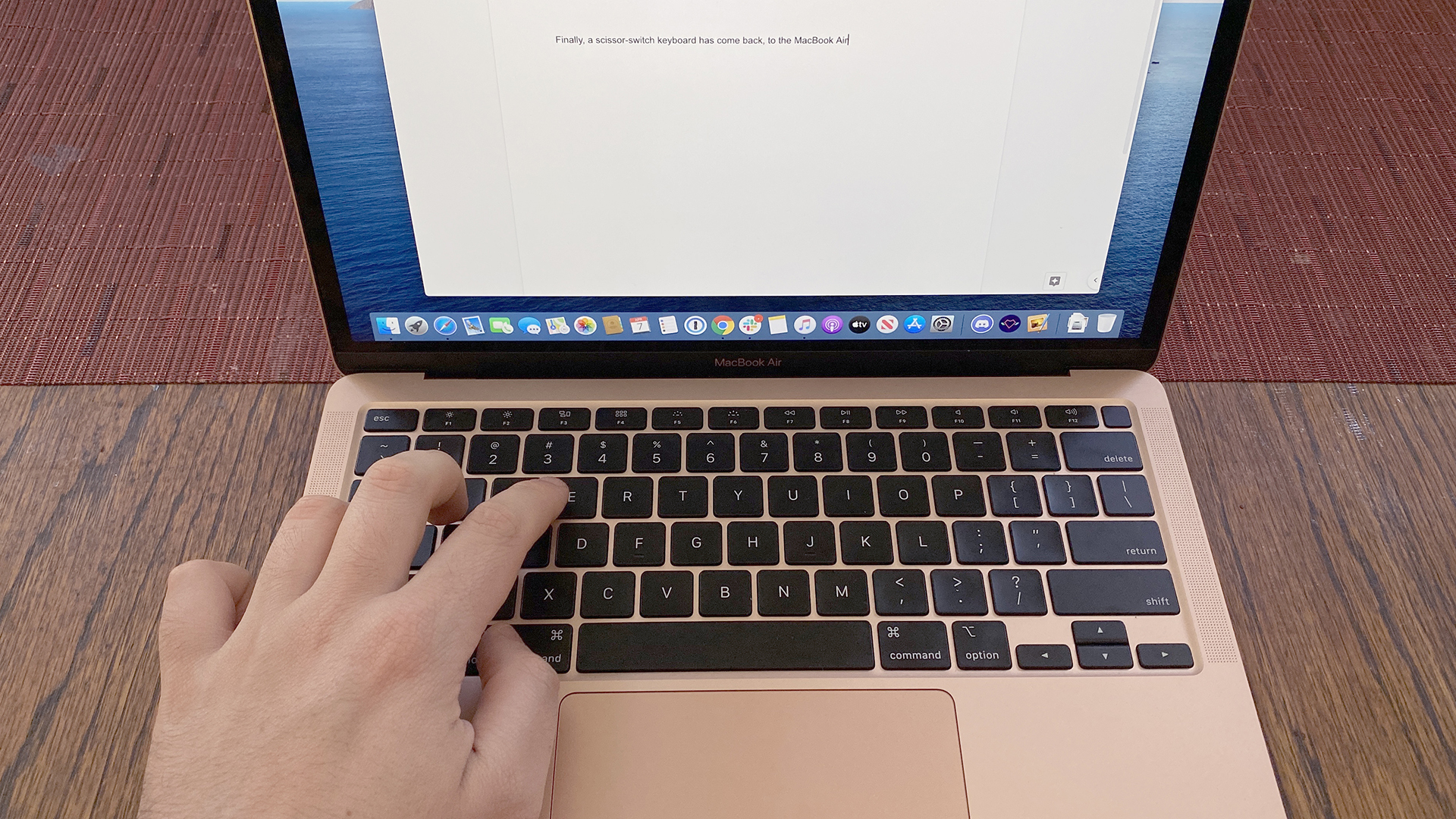
The new MacBook Air has keys that actually feel great to type on, as if my fingers are a pack of Marios gleefully bouncing off of goombas.
The keys feature 1 millimeter of travel, which is improved from the 0.7mm from last year's keys. That makes a huge difference, adding 42% more depth to the keys so you don't feel like you're slamming your digits against metal.
It's not just the keyboard’s depth that has improved, though: Apple's swapped out the 'butterfly' style switches it used in the MacBook Air for the last two years for a traditional scissors-style switch, you can feel the difference. When I took the keyboard for a spin on the 10fastfingers.com typing test, I clicked to a rate of 77 words per minute, which is not too far from my 80wpm average.
The MacBook Air's 5.2 x 4.7-inch Force Touch trackpad offers speedy response times to two-finger scrolling and three-finger macOS gestures. I still wish you could actually click the trackpad, as the haptic feedback it provides to try and "fool" your fingers still doesn't provide enough of a click, even when you increase its reaction setting.
MacBook Air 2020 review: Performance
I tested a configuration of the new MacBook Air with an Intel Core i5-1030NG7 processor (which is based on the low-power Y-series architecture) and 8GB of memory, which enabled moderate multitasking, but not as much as I wanted. To start, I split my screen with a dozen Safari tabs and a 1080p YouTube video of footage shot on a Disney World amusement park ride, and saw no slowdowns or stutter.
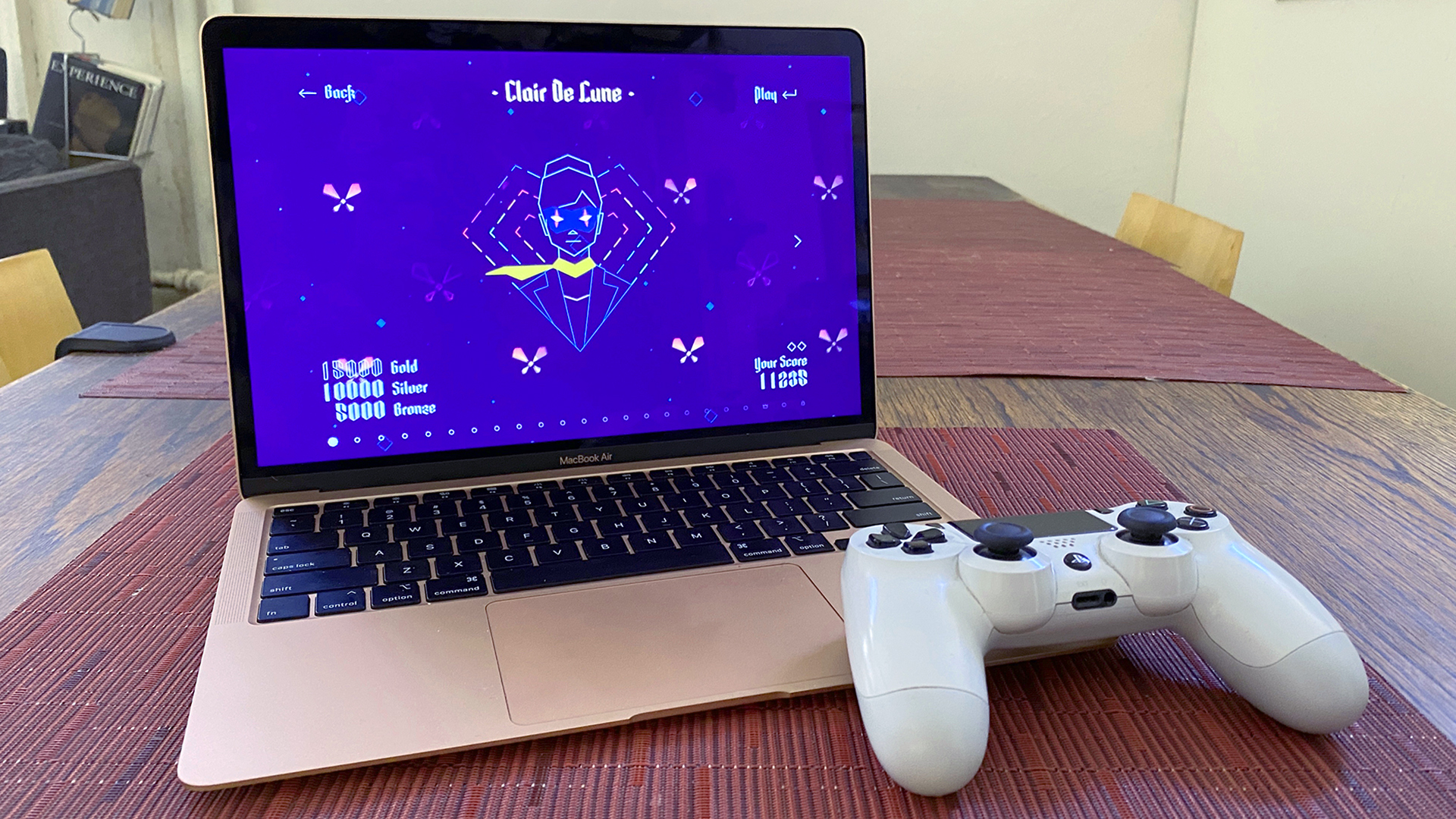
But as the day progressed and I pushed the machine harder, I noticed a few pauses. With 12 Safari tabs, 16 Chrome tabs, Slack, Discord, 1Password and the 4K version of the film Midsommar open in the TV app, I saw slight lag as I switched between apps. I could even hear the MacBook Air's fans blasting loudly, trying to cool the system to keep up.
The MacBook Air 2020 didn't wow us on synthetic benchmarks, with a 2,738 on Geekbench 5.0, which measures overall performance. We saw much higher scores from the Microsoft Surface Pro 7 (Core i5-1035G4 U-series CPU) and Dell XPS 13 (Core i7-1065G7 U-series CPU) with 4,443 and 4,847, respectively — which makes sense given their faster U-series chips.
The MacBook Air 2020 took 27 minutes and 10 seconds to transcode a 4K video to 1080p in Handbrake, which is not great.. The Surface Pro was 5 minutes faster than the Air with a time of 22:30, and the XPS 13 was nearly twice as fast at 15:40.
The one highlight of the new MacBook Air’s benchmark scores came from its mighty fast 512GB SSD. On the BlackMagic speed test, the Air recorded a 1,301.9MBps read speed, which tops our 1,162.7MBps average for laptops.
The Intel Iris Plus GPU in the MacBook Air 2020 isn’t built for serious gaming or graphics work, but it's still capable of basic tasks. I was able to perform snappy edits in the Pixelmator image editor, and the Apple Arcade title Sayonara Wild Hearts played smooth enough, even with dozens of Chrome and Safari tabs open in the background. But on the Sid Meyer’s Civilization VI test, the MacBook Air only notched a 7, lagging behind the 9 category average and the XPS 13's 18.7.
MacBook Air 2020 review: Battery life
The new MacBook Air’s battery life is a notable improvement over last year’s model. On our battery test (continuous web surfing over Wi-Fi at 150 nits), the MacBook Air 2020 lasted for 9 hours and 31 minutes, beating the 2019 model's time of 8:51 and outlasting the Surface Pro (7:30). The 1080p XPS 13, however, crushed all competitors with an incredible 12 hours and 39 minutes.
MacBook Air 2020 review: Verdict
As this MacBook Air 2020 review shows, this model made it easier to find the right MacBook. Its comfortable keyboard, amazing sound quality and lengthy battery life made the Intel the MacBook Air the default MacBook for most — and that stayed true for the M1-based MacBook Air that succeeded it.
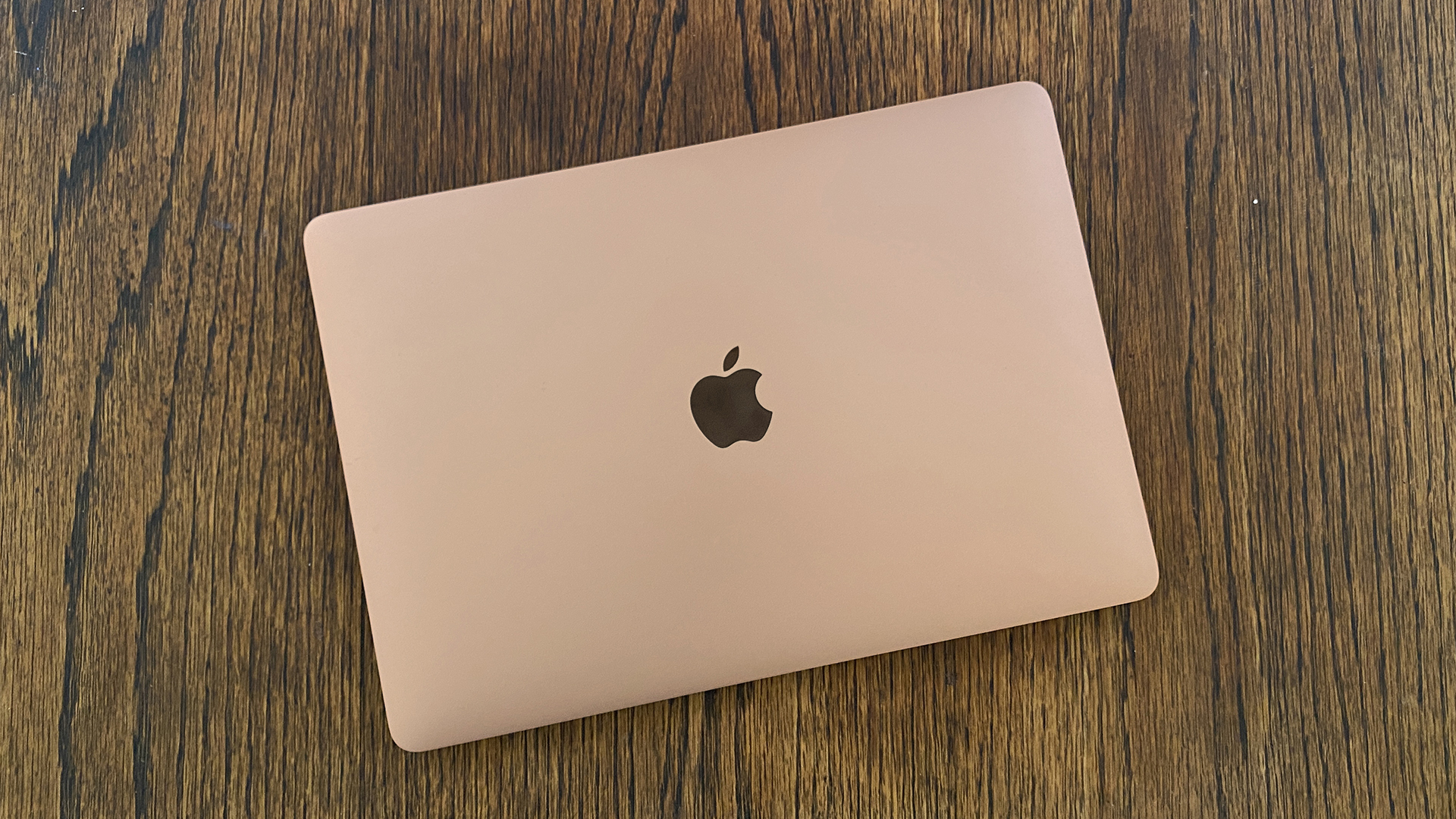
If you're a power user, but don't want to spend MacBook Pro prices, the Dell XPS 13 offers more speed and longer battery life, giving Mac users a reason to consider switching. However, if you've got the cash, the 16-inch MacBook Pro is a speed demon worth looking at. But everyday users that are tied to the macOS ecosystem will love the MacBook Air for its sharp, colorful screen and solid endurance.

Henry is a managing editor at Tom’s Guide covering streaming media, laptops and all things Apple, reviewing devices and services for the past seven years. Prior to joining Tom's Guide, he reviewed software and hardware for TechRadar Pro, and interviewed artists for Patek Philippe International Magazine. He's also covered the wild world of professional wrestling for Cageside Seats, interviewing athletes and other industry veterans.
